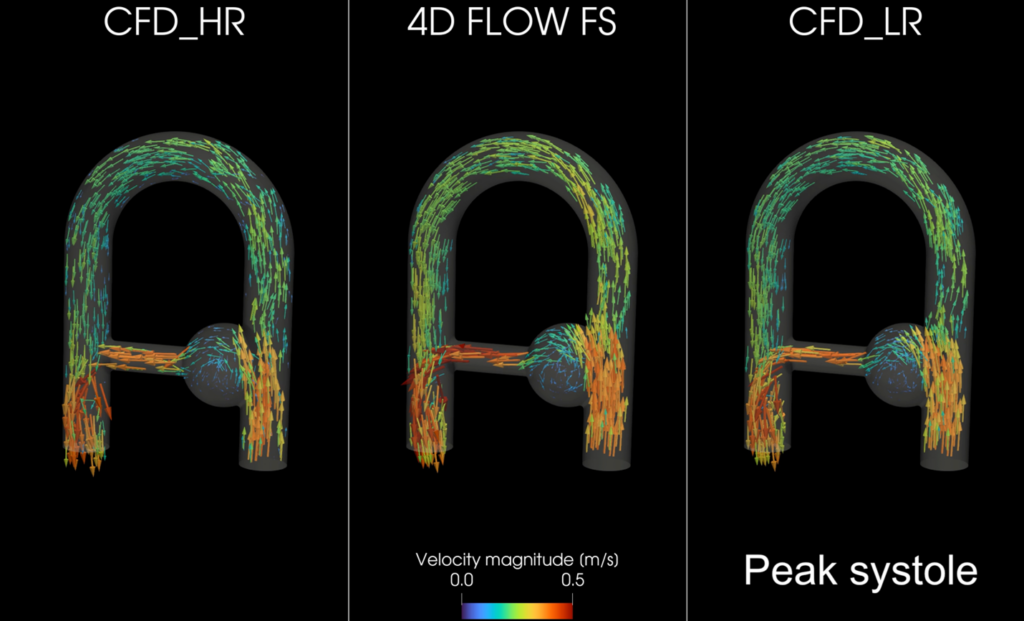So-called “4D flow MRI” sequences provide an image of the
blood flow velocity, both within a given volume and over the course of the cycle
cardiac [1]. This promising technique provides non-invasive access to
hemodynamic biomarkers such as flow rate, maximum velocities or even
derived parameters (e.g. parietal friction, turbulence kinetic energy). However,
the clinical use of 4D flow MRI remains underdeveloped due to the long duration of its use.
acquisitions. Various techniques have been developed to speed up acquisition time:
parallel imaging (e.g. GRAPPA, SENSE) or, more recently, Compressed Sensing [2,3].
The main objective of this study is to investigate the measurement errors induced by the
GRAPPA and Compressed Sensing accelerations for flow characterization
obtained with 4D flow MRI, in a well-controlled environment featuring
complex flow patterns typical of those seen in the cardiovascular system.
Qualitatively, similar hemodynamic patterns were observed for all the
modalities. In the video opposite, the non-accelerated acquisition (4D FLOW FS) is compared with the 4D FLOW FS.
MFN simulation (CFD_HR), and to the same simulation under-resolved to match the
MRI voxels (CFD_LR).
Quantitatively, it was found that :
This study shows that highly accelerated Compressed Sensing acquisition enables
obtain in vitro results very similar to those obtained with a non-accelerated sequence
or with conventional GRAPPA-type accelerations (factors 2 or 3). However, it
artifacts are inherent to the 4D flow MRI acquisition procedure: artifacts from
spatial and velocity displacement, intravoxel phase shifting, partial volume effects… Although
also has its limitations, the MFN appears to be a tool that can be used to study
discrepancies.
[1] Markl M, Frydrychowicz A, Kozerke S, Hope M, Wieben O. 4D flow MRI. J Magn Reson
Imaging. 2012;36(5):1015-1036. doi:10.1002/jmri.23632
[2] Ma LE, Markl M, Chow K, et al. Aortic 4D flow MRI in 2 minutes using compressed sensing,
respiratory controlled adaptive k-space reordering, and inline reconstruction. Magn ResonMed.
2019;81:3675-3690.
[3] Pathrose A, Ma L, Berhane H, et al. Highly accelerated aortic 4D flow MRI using compressed
sensing: performance at different acceleration factors in patients with aortic disease. Magn
Reson Med. 2020;85:2174-2187.
[4] Puiseux T, Sewonu A, Meyrignac O, et al. Reconciling PC-MRI and CFD: An in-vitro study.
NMR Biomed. 2019;32(5):e4063.
[5] YALES2BIO, ( https://imag.umontpellier.fr/~yales2bio/ )

